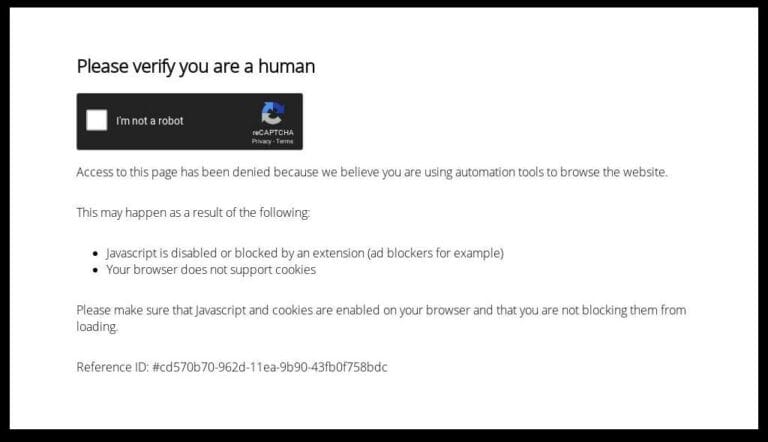Understanding Website Maintenance Cost: A Comprehensive Guide for 2025
Keeping a website up and running in 2025 isn’t just about having it look good. It’s about making sure it’s safe, fast, and easy to use. Whether you’re a small business or a big company, understanding the costs of website maintenance is key. From handling security issues to making sure your site ranks well on Google, there’s a lot to consider. Let’s break down what goes into website maintenance costs and how you can keep them in check.
Key Takeaways
- Website maintenance is essential to keep your site secure and performing well.
- Costs can vary widely based on complexity and features of the website.
- Regular updates and backups are crucial to prevent data loss and security breaches.
- DIY maintenance might save money but can lead to more problems if not done correctly.
- Investing in professional maintenance services can save time and ensure better results.
Why Website Maintenance is Crucial in 2025

Enhancing Security Measures
In 2025, the digital landscape is more complex than ever, with cyber threats constantly evolving. Regular website maintenance is essential to protect against data breaches and cyberattacks. This involves updating software, monitoring for vulnerabilities, and ensuring that security protocols are up-to-date. Without these measures, your website could become an easy target for hackers.
- Regular software updates to patch vulnerabilities.
- Implementing robust firewalls and security plugins.
- Continuous monitoring for suspicious activities.
Keeping your website secure is not just about protecting your data; it’s about maintaining trust with your users.
Improving User Experience
A website that runs smoothly keeps users engaged and happy. Maintenance ensures that all site features work as intended, pages load quickly, and navigation is intuitive. A seamless user experience can significantly impact how visitors perceive your brand.
- Ensuring mobile responsiveness.
- Regularly checking for and fixing broken links.
- Optimizing page load speeds.
Boosting SEO Rankings
Search engines favor websites that are well-maintained. Regular updates and optimizations can help your site rank higher in search results. This means more visibility and potentially more traffic. SEO isn’t just about keywords—it’s about maintaining a healthy, functional website.
- Updating content to keep it fresh and relevant.
- Using analytics to track and improve site performance.
- Ensuring your site is indexed correctly by search engines.
Maintaining your website is not just a technical requirement; it’s a strategic advantage in 2025. For more insights on regular website maintenance, explore how it ties into security, functionality, and user-friendliness.
Breaking Down the Costs of Website Maintenance
Understanding the expenses associated with website maintenance is vital for businesses in 2025. Here’s a detailed breakdown:
Factors Influencing Costs
Various elements can impact the overall cost of maintaining a website. These include:
- Website Complexity: Simpler sites, like blogs or small business pages, generally require less upkeep compared to complex e-commerce platforms.
- Hosting Plans: The choice between shared, VPS, or dedicated hosting can significantly affect costs.
- Security Measures: Implementing strong security protocols can add to the expenses but are essential for protecting data.
Average Monthly and Annual Expenses
The costs for maintaining a website can vary widely. On average:
- Monthly Costs: Typically range from $35 to $5000, depending on the website’s needs.
- Annual Expenses: Can be anywhere from $300 to $60,000, influenced by factors such as site size and required services.
| Cost Component | Monthly Cost Range | Annual Cost Range |
|---|---|---|
| Domain & Hosting | $2 – $20 | $24 – $10,000 |
| SSL Certificate | $10 – $1500 | $120 – $18,000 |
| CMS Updates | $0 – $3500 | $0 – $42,000 |
| Technical Support | $1500 – $3000 | $18,000 – $36,000 |
| Website Analytics | $5 – $15 | $60 – $180 |
| General Updates | $15 – $105 | $180 – $1260 |
| E-commerce Maintenance | $15 – $25 | $180 – $300 |
| SEO Efforts | $400 – $10,000 | $4800 – $120,000 |
Hidden Costs to Consider
While some costs are expected, others might sneak up on you:
- Unexpected Technical Issues: Bugs or security breaches can incur additional charges for emergency fixes.
- Content Refreshes: Regularly updating content to keep it relevant can add to costs.
- Optimizing databases, scripts, and graphics is essential for enhancing performance and page load times. Monthly maintenance costs can vary between USD 100 and USD 1000.
Keeping a website running smoothly is not just about fixing what’s broken; it’s about anticipating future needs and being prepared for unexpected challenges. This proactive approach can save both time and money in the long run.
Essential Components of Website Maintenance

Keeping a website running smoothly isn’t just about getting it online. There are several key elements that need regular attention to ensure everything works as it should. Let’s break down the essentials.
Domain and Hosting Management
Your domain name and hosting are the backbone of your website. Think of the domain as your address and hosting as the actual house. Without proper management, your site could face downtime or even disappear. Here’s what you need to focus on:
- Domain Renewal: Make sure your domain is renewed annually to keep your web address active.
- Hosting Plans: Choose a hosting plan that suits the size and needs of your website. Costs can range from a few bucks to thousands yearly.
- Server Performance: Regularly check server performance to avoid slow loading times.
Regular Software Updates
Keeping your website’s software up-to-date is like changing the oil in your car. It keeps everything running smoothly and securely. Here’s a quick checklist:
- CMS Updates: Platforms like WordPress release updates to fix bugs and improve security.
- Plugin and Theme Updates: Ensure all plugins and themes are updated to their latest versions to avoid vulnerabilities.
- Compatibility Checks: After updates, check if everything still works together without issues.
SEO and Marketing Efforts
Maintaining your site’s visibility online is crucial. SEO and marketing are ongoing tasks that help keep your site relevant.
- Keyword Optimization: Regularly update your site’s content with relevant keywords to improve search rankings.
- Content Refresh: Keep your content fresh and engaging to retain and attract visitors.
- Performance Monitoring: Use tools to track how well your site is doing in search engines and adjust strategies as needed.
Proper maintenance isn’t just a one-time task; it’s an ongoing process that ensures your website remains a valuable asset to your business. By focusing on these essential components, you can keep your site running smoothly and effectively.
DIY vs. Professional Website Maintenance
Pros and Cons of DIY
Taking the DIY route for website maintenance can seem like a savvy move, especially if you’re looking to save some bucks. You have complete control over every update and change, which can be quite empowering. Plus, there’s a wealth of online resources and tools that can guide you through most tasks. However, it demands a hefty time investment and a steep learning curve. If something goes wrong, you might end up spending more time fixing issues than you saved doing it yourself.
Benefits of Hiring Professionals
On the flip side, hiring professionals can free up your time and reduce stress. They bring expertise and experience to the table, ensuring your website is not just maintained but optimized. Professionals can handle complex tasks like security audits and SEO updates efficiently. While the upfront costs are higher, this approach can save money in the long run by preventing costly errors and downtime.
Cost Comparison
Here’s a quick look at how costs can stack up:
| Task | DIY Cost Estimate | Professional Cost Estimate |
|---|---|---|
| Basic Updates | Minimal | $50 – $200/month |
| Security Management | $0 – $100/month | $100 – $500/month |
| SEO and Marketing | $0 – $200/month | $400 – $2,000/month |
Choosing between DIY and professional maintenance is like deciding whether to change your car’s oil yourself or take it to a mechanic. One saves money short-term, the other might save you from a breakdown.
Strategies to Optimize Website Maintenance Costs
Utilizing Cost-Effective Tools
Keeping a website running smoothly doesn’t have to break the bank. One of the best ways to manage costs is by using cost-effective tools. These can include open-source software for content management systems or free plugins that offer essential functionalities. Many tools offer freemium models, where basic features are free, and you only pay for advanced functionalities if needed. Choosing the right tools can significantly reduce your overall maintenance expenses.
Prioritizing Essential Updates
Not every update is critical, and sometimes, less is more. Focus on updates that directly impact security and performance. Regularly update your CMS, plugins, and security patches to avoid vulnerabilities. It’s also wise to keep an eye on user feedback to spot any areas needing urgent attention. This ensures that your site remains secure and functional without unnecessary costs.
Negotiating with Service Providers
Don’t hesitate to negotiate with your service providers. Whether it’s your hosting service, a freelance developer, or a security expert, there’s often some wiggle room in pricing. Discuss your needs and see if there’s a possibility for discounts or bundled services. By being proactive, you might find opportunities to save money while still getting quality service.
“Optimizing website maintenance costs requires a strategic approach, balancing between essential updates and cost-effective tools. Engaging in open dialogues with service providers can often lead to better deals, ensuring that your website remains both functional and affordable.”
For more expert strategies on managing and optimizing website maintenance, check out our explore expert strategies guide.
The Future of Website Maintenance
Emerging Trends in 2025
As we move further into 2025, several trends are shaping the future of ongoing care and attention for websites. Automation is taking center stage, with AI-driven tools handling routine tasks like updates and security scans. This shift not only reduces manual labor but also minimizes human error. Moreover, personalized user experiences are becoming more prevalent. Websites now dynamically adjust content based on user behavior, making interactions more meaningful and engaging.
Technological Advancements
Technological advancements are revolutionizing how we approach website maintenance. The integration of machine learning is enhancing predictive maintenance capabilities, allowing for the identification of potential issues before they become critical. Additionally, advancements in cloud technology are facilitating seamless scalability and improved data management, ensuring websites can handle increased traffic without a hitch.
Predicted Cost Changes
Looking ahead, the cost of website maintenance is expected to evolve. While some expenses may decrease due to automation and efficiency improvements, others might rise as websites demand more sophisticated features and security measures. Here’s a quick look at potential cost changes:
| Aspect | Potential Cost Change |
|---|---|
| Automation Tools | Decrease |
| Security Enhancements | Increase |
| Personalized Content | Increase |
The future of website maintenance is not just about keeping things running smoothly; it’s about adapting to new challenges and opportunities. Staying ahead means embracing these changes and leveraging them to maintain a strong online presence.
Wrapping It Up
So, there you have it. Keeping a website up and running in 2025 isn’t just about setting it up and letting it be. It’s like owning a car; you gotta keep it tuned and ready to go. Whether you’re a small business or a big player, understanding these costs can save you a lot of headaches down the road. Sure, it might seem like a lot to handle, but with the right approach, it’s totally manageable. You can choose to do it yourself if you’re up for the challenge, or hire someone to take care of it for you. Either way, staying on top of your website maintenance is key to keeping your online presence strong and effective. So, take a deep breath, plan your budget, and keep your site in tip-top shape. It’s worth it in the long run.
Frequently Asked Questions
Why do I need to keep my website updated?
Keeping your website updated ensures it runs smoothly, stays secure, and gives users a good experience. Regular updates help fix bugs and add new features.
How much should I expect to spend on website maintenance each year?
The cost can vary a lot. For simple sites, it might be a few hundred dollars a year. For more complex sites, it could be thousands.
Can I maintain my website by myself?
Yes, you can! But it might be tricky if you’re not familiar with how websites work. Some people prefer hiring professionals to save time and avoid mistakes.
What are some hidden costs of website maintenance?
Hidden costs might include unexpected software updates, security fixes, or extra charges for more storage and bandwidth.
Is it better to hire someone to maintain my website?
Hiring a professional can be helpful if you want to ensure everything is done right and save yourself time. They know what to look for and can handle problems quickly.
What happens if I don’t maintain my website?
If you don’t maintain your site, it might become slow, get hacked, or not work correctly for users. This could lead to losing visitors or even revenue.




